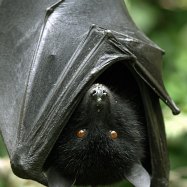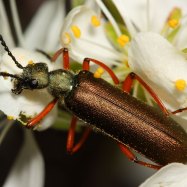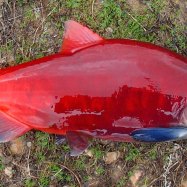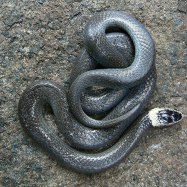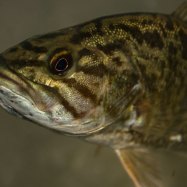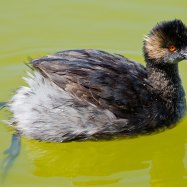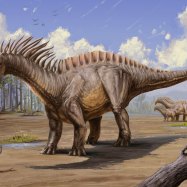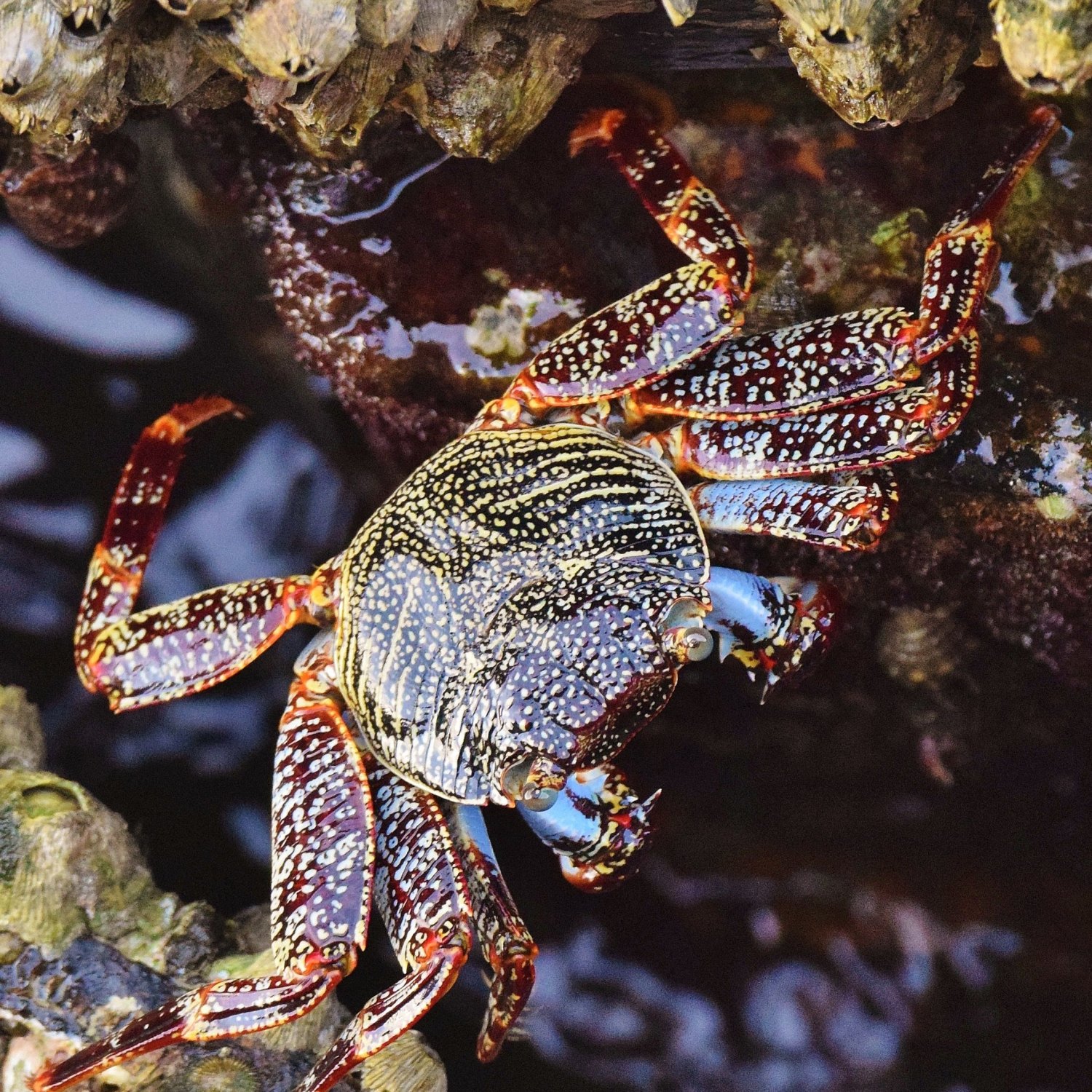
Rock Crab
Up to 8 inches (20 cm) across
The Rock Crab is a unique creature found in the Atlantic Ocean, specifically in Maine, Massachusetts, Nova Scotia, and Newfoundland. This compact and flattened animal can grow up to 8 inches across and belongs to the Cancridae family. Despite its small size, it plays an important role in maintaining the balance of marine ecosystems. So next time you're near the Atlantic, keep an eye out for this charming crustacean! #RockCrab #AtlanticOcean #Cancridae #Maine #Massachusetts #NovaScotia #Newfoundland
Animal Details Summary:
Common Name: Rock Crab
Kingdom: Animalia
Habitat: Rocky shores, tidal pools, and subtidal areas
The Fascinating World of the Rock Crab: A Feast for the Senses
The ocean is a vast and mysterious place, home to a diverse array of creatures that are constantly adapting and evolving to survive in its ever-changing environments. One such creature is the rock crab, also known by its scientific name, Cancer irroratus. This iconic crustacean is a marvel of nature, with a unique set of features and behaviors that make it a fascinating subject for observation and study.The Basics: What is a Rock Crab?
Before we delve deeper into the world of the rock crab, let us first understand what makes it unique Rock Crab. Belonging to the Kingdom Animalia and the Phylum Arthropoda, it is a member of the Malacostraca class, which includes all crustaceans such as crabs, lobsters, and shrimp. Its classification extends further to the Order Decapoda, which means "ten-footed" (as most decapods have ten legs) and the Family Cancridae, which includes all species of rock crabs.These fascinating creatures can be found in the North Atlantic Ocean, specifically in the United States and Canada, where their preferred rocky shore habitats and abundance of prey make them thrive. Their most common locations are in Maine, Massachusetts, Nova Scotia, and Newfoundland, where they can be found in abundance and are considered as a popular seafood delicacy.
Appearance and Physical Characteristics
The rock crab is a visually striking creature, with a compact and flattened body that can span up to 8 inches (20 cm) across. Their coloration ranges from dark brown to greenish-brown, depending on their age and location. The overall shape of their body allows them to easily navigate the rocky terrain, making them efficient predators.But what truly sets them apart is their distinctive claws, with one being larger and sharper than the other. This asymmetry is a result of their feeding habits, as we will explore in the next section Rhamphosuchus. Another unique physical feature of the rock crab is their exoskeleton, which acts as their protective armor and provides support for their muscles and internal organs. These exoskeletons are also responsible for their ability to change color to blend in with their surroundings, making them elusive and hard to spot for both predators and prey.
Feeding Method: Carnivorous Crustaceans
As mentioned earlier, the rock crab is a predator, and a very efficient one at that. They have a diverse diet, which consists of bivalves, snails, small crustaceans, and even other rock crabs. Their sharp claws allow them to easily crack open the shells of their prey, and their powerful mandibles enable them to crush and tear through tough shells. Their feeding behavior is highly dependent on the availability of prey in their environment and the time of year, as their diet changes with the seasons.Interestingly, despite their carnivorous nature, the rock crab has also been observed feeding on plant material, such as seaweed and algae. This is a unique trait that sets them apart from other crustaceans and showcases their adaptability and resilience.
A Habitat like No Other
In order to truly understand the rock crab, we must take a closer look at its natural habitat. Rocky shores, tidal pools, and subtidal areas are where these fascinating creatures call home. They prefer these habitats because of the abundance of food and shelter that they provide. Rocky shores provide ample hiding places for the crabs, while also offering easy access to small crevices where they can find food.Tidal pools, on the other hand, are important for their survival during low tide when they would otherwise be exposed to predators or harsh weather conditions. These pools also act as a nursery for young rock crabs, providing them a safe and sheltered environment to grow and develop before venturing out into the open ocean.
Survival of the Fittest
The underwater world is a constant battle for survival, and the rock crab has evolved some remarkable defense mechanisms to stay ahead of its predators. As mentioned earlier, its exoskeleton is its natural armor, giving it the ability to change color to suit its surroundings and to resist attacks from predators. This shell also hardens over time, providing the crab with added protection as it grows and faces increasing threats from bigger predators.In addition, rock crabs have the ability to regenerate lost claws, a crucial survival mechanism that allows them to fend off predators and continue hunting for food. This process is known as autotomy, and it involves the crab voluntarily breaking off its own limb when threatened, only to regrow it later. This remarkable skill helps them survive in the highly competitive underwater world.
The Rock Crab and Humans
Crab fisheries are a significant source of livelihood for local communities in the United States and Canada, and the rock crab is an important part of these fishing industries. They are considered a delicacy and are often caught and sold for their sweet and succulent meat. However, strict regulations and conservation efforts are in place to ensure that these creatures are not overfished and their populations thrive.One interesting fact about the rock crab industry is the unique "berried" females, which are females carrying eggs attached to their abdomens. These females are typically released back into the ocean to allow the eggs to hatch and continue the reproductive cycle. These efforts ensure that the population of rock crabs remains stable and sustainable in the long run.
The Connection to Natural Language Processing
Natural Language Processing (NLP) is a branch of artificial intelligence that focuses on the interactions between machines and human languages. Although it may seem like a disconnected topic from the world of rock crabs, there are interesting connections to be made.NLP technology has been used to analyze and index vast amounts of data from scientific research papers and articles on crustaceans, including rock crabs. This allows researchers and marine biologists to efficiently access and analyze information, leading to new discoveries and a better understanding of these fascinating creatures. NLP algorithms have also been used to track and monitor the distribution and movement patterns of rock crabs, providing valuable insights into their behavior and habitats.
Conclusion
The world of the rock crab is full of wonder and surprise. From their unique physical characteristics, adaptable feeding habits, and fascinating habitats, these creatures have captured the attention of both scientists and seafood enthusiasts alike. Their resilience and ability to thrive in the ever-changing ocean environments are a testament to their survival instincts and their crucial role in the ecosystem.We have barely scratched the surface of what the rock crab has to offer. As technology and research continue to advance, we can expect to uncover more about these captivating creatures and their contribution to our natural world. So, the next time you come across a rock crab on a rocky shore or on your dinner plate, take a moment to appreciate the complexity and beauty of this remarkable crustacean.

Rock Crab
Animal Details Rock Crab - Scientific Name: Cancer irroratus
- Category: Animals R
- Scientific Name: Cancer irroratus
- Common Name: Rock Crab
- Kingdom: Animalia
- Phylum: Arthropoda
- Class: Malacostraca
- Order: Decapoda
- Family: Cancridae
- Habitat: Rocky shores, tidal pools, and subtidal areas
- Feeding Method: Carnivorous
- Geographical Distribution: North Atlantic Ocean
- Country of Origin: United States, Canada
- Location: Maine, Massachusetts, Nova Scotia, and Newfoundland
- Animal Coloration: Dark brown to greenish-brown
- Body Shape: Compact and flattened
- Length: Up to 8 inches (20 cm) across
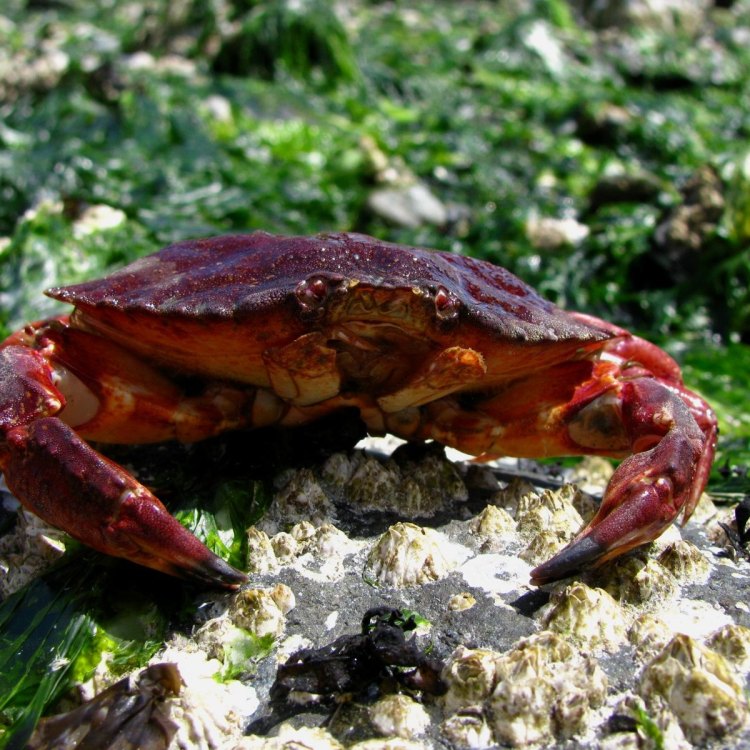
Rock Crab
- Adult Size: Around 4 to 5 inches (10 to 12 cm) across
- Average Lifespan: Up to 13 years
- Reproduction: Sexual
- Reproductive Behavior: Mating occurs in late spring to early summer
- Sound or Call: No sound produced
- Migration Pattern: Some individuals migrate to deeper water during winter
- Social Groups: Solitary
- Behavior: Nocturnal and secretive
- Threats: Overfishing, pollution, habitat destruction
- Conservation Status: Not listed
- Impact on Ecosystem: Important prey species and indicator of ecosystem health
- Human Use: Commercial and recreational fishing
- Distinctive Features: Three long spines on each side of the carapace
- Interesting Facts: Rock crabs are excellent climbers and can scale vertical rocks and pilings
- Predator: Various fish species, birds, and larger crustaceans
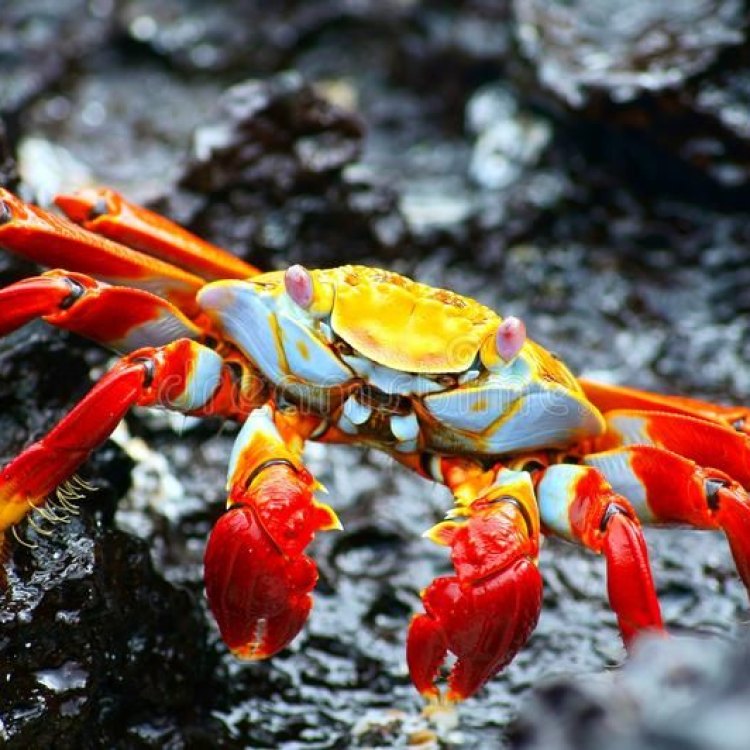
Cancer irroratus
The Fascinating World of Rock Crabs: A Unique and Vital Species
In the vast and diverse world of marine life, the rock crab (Cancer irroratus) may not be the first creature that comes to mind. Often overshadowed by its popular relatives such as the Dungeness crab or the blue crab, the rock crab stands out for its distinctive characteristics and significant role in its ecosystem. From its interesting reproductive behavior to its crucial importance to human use, the rock crab is a fascinating species that deserves recognition and protection.Size
One of the most striking features of the rock crab is its size PeaceOfAnimals.Com. As an adult, the rock crab can reach an impressive size of 4 to 5 inches (10 to 12 cm) across. This may not seem large in comparison to other marine animals, but for a crab, it is considered to be quite substantial. Its size also makes it a desirable catch for commercial and recreational fishing.
Lifespan
Despite its relatively small size, the rock crab has a long lifespan, with some individuals living up to 13 years. This is significantly longer than the average lifespan of other species of crabs. This longevity allows the rock crab to play a vital role in its ecosystem for a prolonged period, making it an essential part of the marine life cycle.
Reproduction
Rock crabs reproduce sexually, with mating occurring in late spring to early summer. During this time, male crabs seek out females and engage in a courtship ritual that can last for several hours. Once the female has successfully mated, she will carry the fertilized eggs under her abdominal flap until they are ready to hatch Royal Penguin. This reproductive behavior is crucial for maintaining a healthy population of rock crabs and provides an opportunity for eager observers to witness these captivating mating rituals in the wild.
Behavior
Rock crabs are known to be solitary creatures, often living on their own rather than in social groups. They are also nocturnal and secretive, often hiding in crevices and under rocks during the day to avoid predators. This behavior makes them challenging to study, but it also allows them to thrive in their natural habitat.
Migration Pattern
During the harsh winter months, some rock crabs will migrate to deeper waters to escape the cold and find a more abundant food supply. This migratory behavior is critical for the survival of the species and demonstrates their adaptability to changing environmental conditions.
Threats and Conservation Status
Like many other marine animals, the rock crab faces numerous threats to its existence. Overfishing, pollution, and habitat destruction are all major concerns for the species, particularly in areas where they are commercially fished. Despite these challenges, the rock crab is not currently listed as an endangered species. However, continued efforts to protect and conserve their habitat are crucial for their survival.
Impact on Ecosystem
The rock crab's role in its ecosystem cannot be underestimated. As an important prey species, it serves as a vital food source for various fish species, birds, and larger crustaceans. It also acts as an indicator of ecosystem health, with fluctuations in its population often reflecting changes in the environment. Without the rock crab, the balance of the marine ecosystem would be greatly disrupted.
Human Use
The rock crab has been a valuable resource for humans for centuries. It is commercially fished for its delicious meat, and it also serves as a popular target for recreational fishing. In some areas, the rock crab is the primary source of income for local fishermen, providing a sustainable livelihood for many coastal communities.
Distinctive Features
The rock crab is known for its three long spines on each side of its carapace, which sets it apart from other species of crabs. These spines not only add to its unique appearance, but they also serve a practical purpose. They help protect the crab from predators and allow it to blend in with its rocky surroundings.
Interesting Facts
Aside from its distinctive features, the rock crab has a few other interesting facts worth noting. For one, it is an excellent climber, with the ability to scale vertical rocks and pilings with ease. This unique skill helps it navigate its habitat and find food in hard-to-reach places. Additionally, while many species of crabs can produce sounds, the rock crab is not one of them. It does not have vocal cords and therefore does not make any sounds or calls.
Predators
Like all animals, the rock crab is not invincible and has its share of predators. Fish species such as cod, goosefish, and striped bass are known to prey on rock crabs, as well as some marine birds and larger crustaceans. However, their hard exoskeleton and defensive spines provide them with some protection against these predators.
In Conclusion
The rock crab may not receive the same level of attention as some of its more renowned crab counterparts, but its unique features and essential role in its ecosystem make it a vital species worthy of recognition and protection. From its fascinating reproductive behavior to its distinctive spines and climbing abilities, the rock crab is a truly intriguing creature. As with any marine animal, it is vital to promote responsible fishing practices to ensure its continued survival and contribution to the marine ecosystem. So the next time you come across a rock crab, take a moment to appreciate its significance and the incredible world it inhabits.
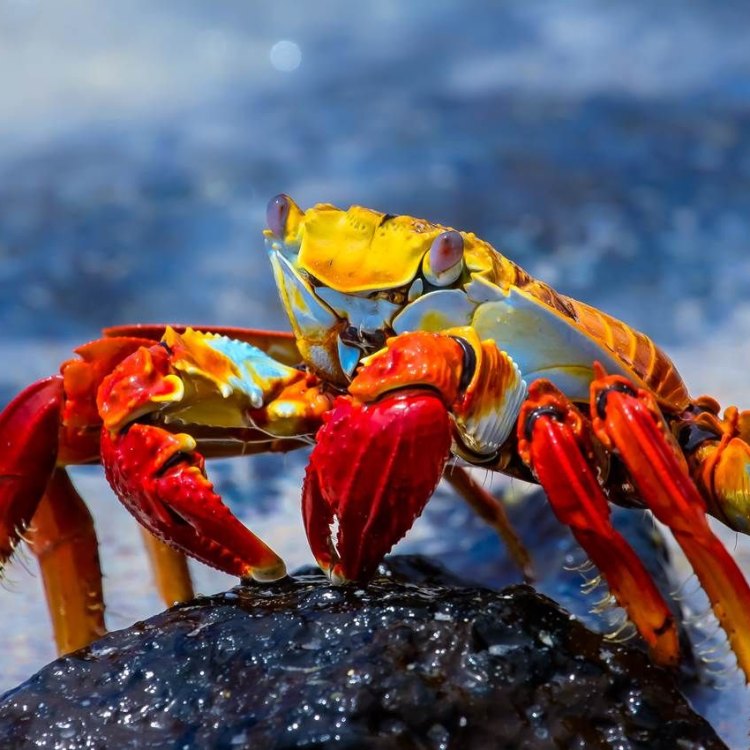
The Fascinating World of the Rock Crab: A Feast for the Senses
Disclaimer: The content provided is for informational purposes only. We cannot guarantee the accuracy of the information on this page 100%. All information provided here may change without prior notice.


